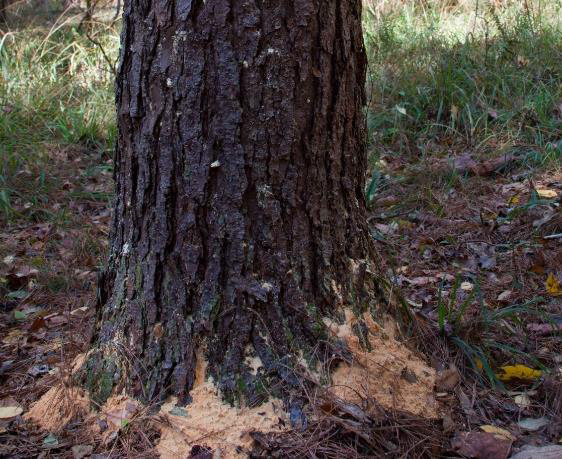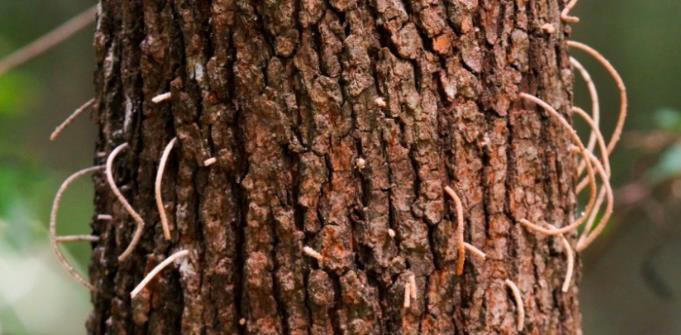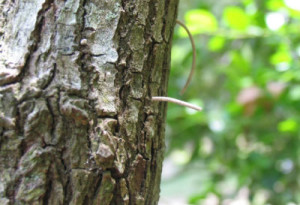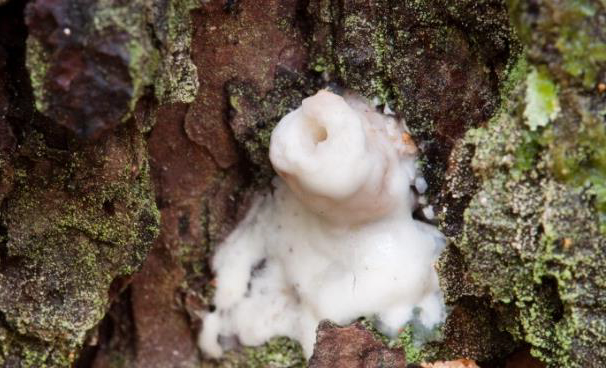



Trees at Risk
Avocado and various fruit trees, Camphora, Samanea, Liquidambar, Ulmus, Magnolia, and others. Many ambrosia species will preferentially attack smaller trees or new plantings in particular. They may tend to attack trees that have recently been weakened by a typhoon or other stressful event.
Signs of Damage
- Yellowing of foliage.
- Entire branches can die.
- 1” to 2” long frass tubes the thickness of pencil lead are a dead giveaway. They are rare, though; being weak they will break in wind and rain. Some species begin feeding at the bottom of the trunk while others can attack near the base of twigs and branches.
- “Sawdust” that is actually frass can accumulate at the base of the tree.
- Pencil lead-sized holes called “shotholes” at the base twigs where the beetle has exited.
"A few species of bark beetles, or fungi they carry, can contribute to major diseases in trees."
Bark and ambrosia beetles are a highly diverse group of forest insects. Most live peaceful lives inside dead or dying trees. The beetles help fungi reach normally inaccessible nutrients by burrowing into newly dead trees and together they begin the process of decay in the tree.
Physical Appearance
- 1.4mm – 4mm dark brown to black beetle.
- Eggs and larvae are smaller than a pencil tip and are rarely seen.

Some species of Bark and Ambrosia beetles include:
- Monarthrum mali
- Gnathotrichus materiarius
- Ambrosiodmus spp.
- Cnestus mutilatus
- Euwallacea spp.
- Xyleborinus saxesenii
- Xyleborusaffinis
- Xyleborus ferrugineus
- Xyleborus pubescens
- Xyleborus glabratus
- Xylosandrus amputatus
- Xylosandrus crassiusculus
- Xylosandrus compactus
- Myoplatypus flavicornis
- Euplatypus compositus
Treatment Strategy
Prevention is the most reliable method available. The beetle does not feed on the host tree, so systemic insecticides are not effective. Bark sprays are the only way known to prevent trees from attack.
Maintaining tree vigor can help. Most native species will not attack healthy trees, but attack weakened, dying, or dead trees with enough wood moisture to support their symbiotic fungal growth. Some exotic species will attack both weakened and healthy trees.
Cultural practices such as watering and mulching are also helpful.
Treatment Expectations
Systemic insecticides do not work because these beetles do not actually feed on the trees. Contact insecticides can be useful in managing this pest, but beetles need to be present for best control.
Contact Us
Do you suspect this insect may be attacking your trees or palms? Contact us and tell us about the issue and we’ll do our best to help. contact@atptree.com
